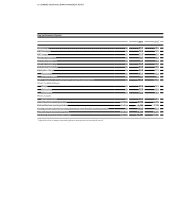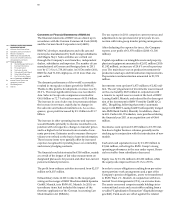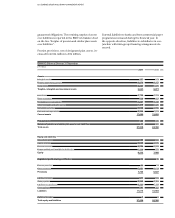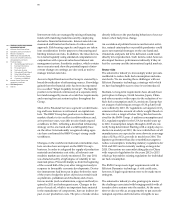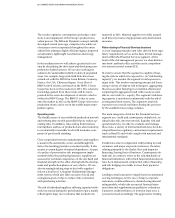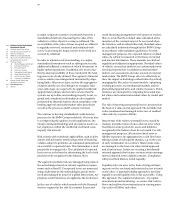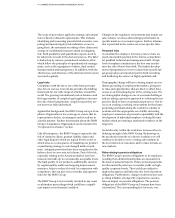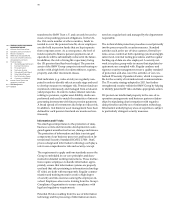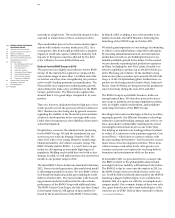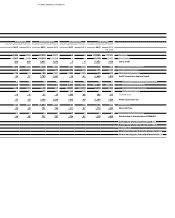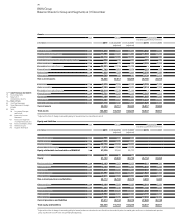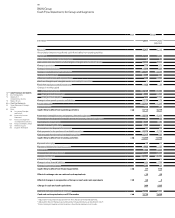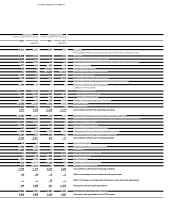BMW 2011 Annual Report Download - page 71
Download and view the complete annual report
Please find page 71 of the 2011 BMW annual report below. You can navigate through the pages in the report by either clicking on the pages listed below, or by using the keyword search tool below to find specific information within the annual report.71 COMBINED GROUP AND COMPANY MANAGEMENT REPORT
The scope of procedures applied to manage operational
risks is based on Basel II requirements. This includes
identifying and measuring potential risk scenarios, com-
puting and monitoring key risk indicators on an on-
going basis, the systematic recording of loss claims and
a range of coordinated measures aimed at mitigating
risk. Both qualitative and quantitative aspects need to
be taken into account in the decision process. The latter
is backed up by various system-based solutions, all of
which follow the principles of operational risk manage-
ment, such as the segregation of duties, dual control,
documentation and transparency. In addition, both the
effectiveness and efficiency of the internal control system
are tested regularly.
Legal risks
Compliance with the law is one of the basic prerequi-
sites for our success. Current law provides the binding
framework for our wide range of activities around the
world. The growing international scale of business and
the huge number of complex legal regulations increase
the risk of laws being broken, simply because they are
not known or fully understood.
Against this background, the BMW Group set up a Com-
pliance Organisation a few years ago to ensure that its
representative bodies, its managers and its staff act in
a lawful manner. Further information about the BMW
Group’s Compliance Organisation can be found in the
“Corporate Governance” section.
Like all enterprises, the BMW Group is exposed to the
risk of warranty claims, product liability claims and
other legal disputes which are typical for the sector or
which arise as a consequence of realigning our product
or purchasing strategy to suit changed market condi-
tions. Adequate provisions have been recognised in the
balance sheet to cover any such claims. Part of the risk,
especially relating to the American market, has been
insured externally up to economically acceptable levels.
The high quality of our products, additionally ensured
by regular quality audits and ongoing improvement
measures, helps to reduce this risk. In comparison with
competitors, this can give rise to benefits and opportu-
nities for the BMW Group.
The BMW Group is not currently involved in any court
or arbitration proceedings which could have a signifi-
cant impact on its financial condition.
Changes in the regulatory environment may impair our
sales volume, revenues and earnings performance in
specific markets or economic regions. Further informa-
tion is provided in the section on sector-specific risks.
Personnel risks
As an attractive employer, for many years we have en-
joyed a favourable position in the intense competition
for qualified technical and management staff. A high
level of employee satisfaction is the best way to mini-
mise the risk of know-how drift. The further develop-
ment of programmes for new recruits from specific tar-
get groups plays an important part in both recruiting
and furthering the careers of highly qualified staff.
Demographic change will have a lasting impact on con-
ditions prevailing on employment markets, giving rise
to risks and opportunities that are likely to affect busi-
nesses to an increasing degree in the coming years. We
see demographic change as one of our main challenges
and are taking a proactive approach to softening the im-
pact it is likely to have on operational processes. Our fo-
cus is on creating a working environment for the future,
promoting and maintaining the workforce’s ability to
perform with the appropriate set of skills, increasing
employees’ awareness of personal responsibility and the
development of individual employee working life-time
models aimed at retaining a motivated workforce in the
long term.
Social diversity within the workforce increases the un-
derlying strength of the BMW Group. By drawing on
the productive benefits of a diverse workforce we will
continue to be able to serve existing sales markets in
the best interests of customers and to make inroads on
new markets.
Risks relating to pension obligations
The BMW Group’s pension obligations to its employees
resulting from defined benefit plans are measured on
the basis of actuarial reports. Future pension payments
are discounted by reference to market yields on high-
quality corporate bonds. These yields are subject to
market fluctuation and influence the level of pension
obligations. Furthermore, changes in other factors such
as rising inflation or longer life expectancies can also
have an impact on pension obligations. The pension
obligations of the BMW Group in Germany have been
externalised. The corresponding level of assets was


